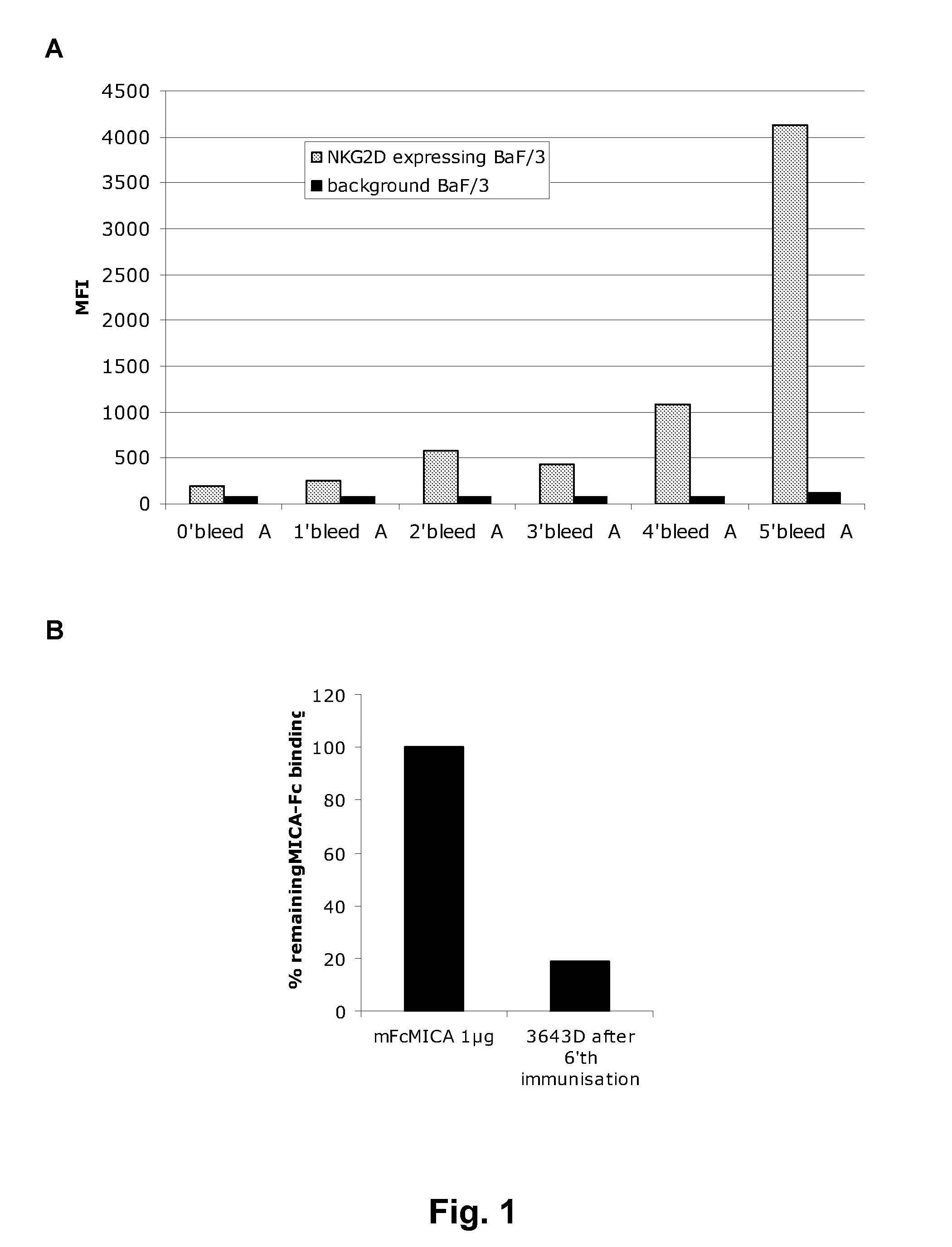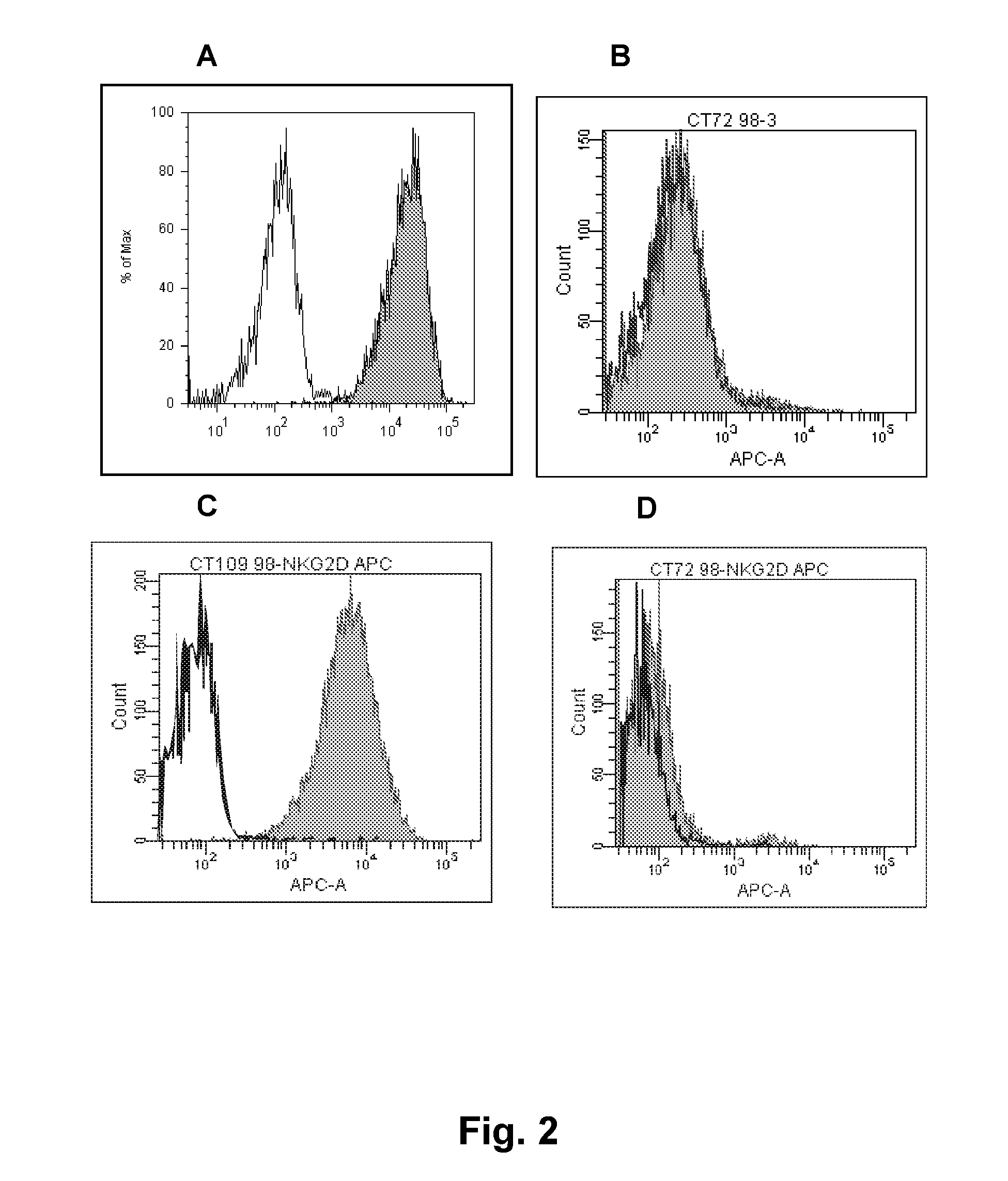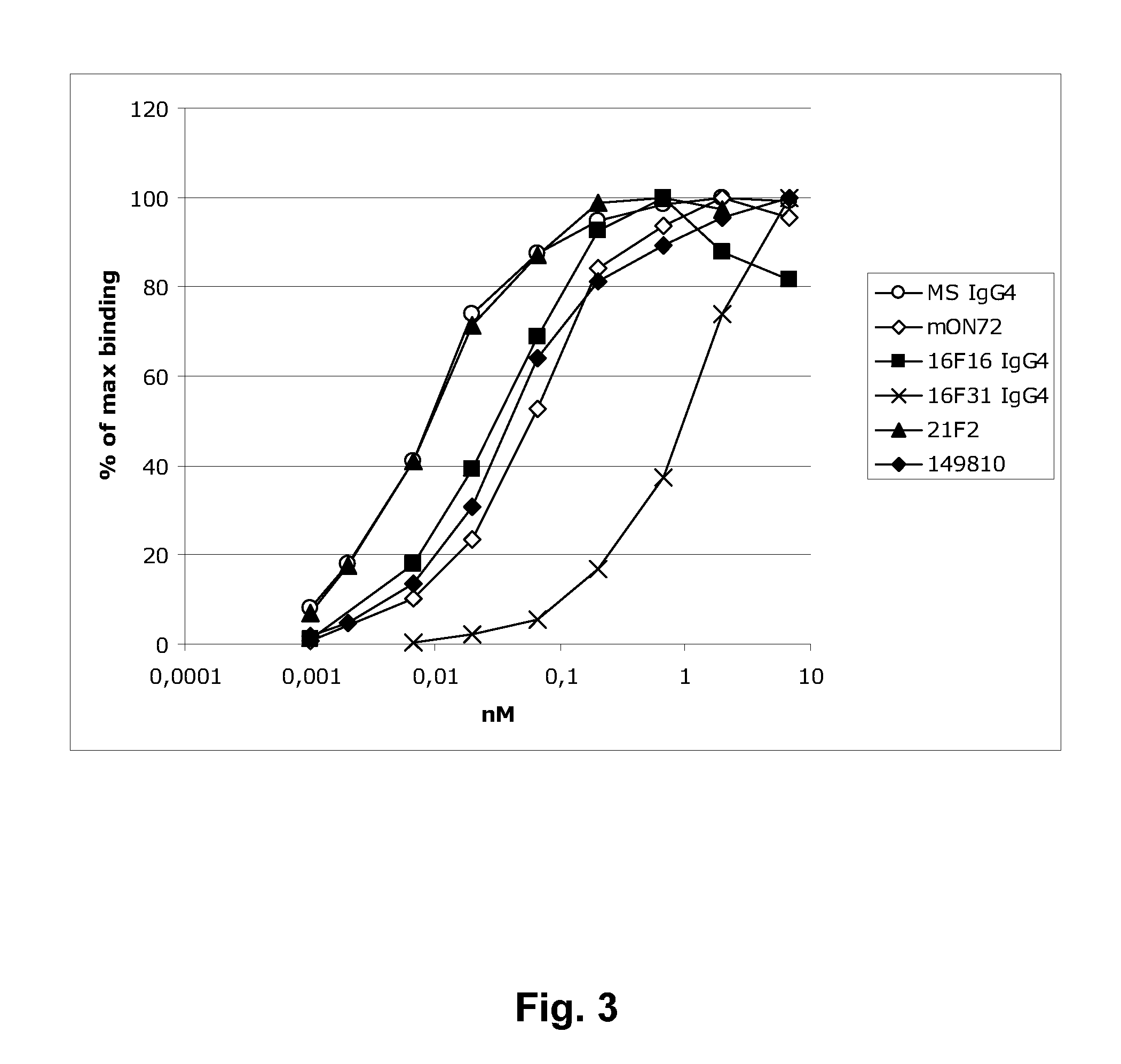Antibodies against human NKG2D and uses thereof
a technology of nkg2d and antibodies, which is applied in the field of antibodies against human nkg2d, can solve the problems of less suitable as a therapeutic agent for inflammatory and/or autoimmune disorders, and achieve the effects of reducing the amount of hnkg2d, preventing hnkg2d-mediated activation of hnk, and reducing the risk of immune responses
- Summary
- Abstract
- Description
- Claims
- Application Information
AI Technical Summary
Benefits of technology
Problems solved by technology
Method used
Image
Examples
example 1
Generation and Initial Screening of Human Monoclonal Antibodies Against hNKG2D
[0355]Materials and Methods
[0356]Antigen. Soluble NKG2D-hFc fusion protein (R&D, cat: 1299-NK) or NKG2D expressed on the surface of cells (NK, BAF, or CHO) were used as antigens for immunization. The BAF cells were co-transfected with full-length NKG2D and DAP10. The CHO cells were transfected with an NKG2D point mutant that transports to the cell surface without DAP10 (Wu et al., Science 1999; 385:730-2). The NK cells were primary NK cells naturally expressing NKG2D.
[0357]Mice. Fully human monoclonal antibodies against NKG2D were produced in the KM Mouse™ strain of transgenic mice that express human antibody genes (PCT publication WO 02 / 43478 to Ishida et al.). In this mouse strain, the endogenous kappa light chain gene has been homozygously disrupted as described in Chen et al (1993) EMBO J. 12:811-820, and the endogenous mouse heavy chain has been homozygously disrupted as described in Example 1 of PCT ...
example 2
Recombinant Production and Sequencing
[0369]A second batch of several hundreds of hybridomas from fusions mice spleens expressing human antibodies were obtained from a separate round of immunization(s). These were screened for NKG2D-specificity using FACS in the same manner as described in Example 1. Antibodies from one hybridoma, MS, were selected for recombinant production and further testing.
[0370]The variable regions of the heavy and light chains of the antibodies were identified by PCR and subsequent sequencing of the isolated product, of mRNA from the hybridoma.
[0371]Materials and Methods
[0372]RNA purification. Total RNA was purified using RNeasy from Qiagen according to the manufactures instructions, except that β-mercaptoethanol was omitted from the procedure. The quality of the RNA was checked by light spectroscopy (260 / 280 nm, 1.8<ratio<2.0) and occasionally RNA degradation was evaluated using a bioanalyser.
[0373]RT-PCR. Full length cDNA was synthesised by SMART-RACE (kit f...
example 3
MICA Blocking Experiments
[0388]Materials and Methods
[0389]Flow cytometry assays—MICA blockade. For analysis of blockade of ligand binding, 50000 NKG2D / DAP10-expressing BaF / 3 cells were incubated in 100 μl total (PBS with 2% FBS at pH7.4) with varying amounts of hybridoma supernatant or purified antibody for 1 h at 16° C., followed by incubation with mFc-MICA (for human antibodies) or hFc-MICA (for ON72) (1 μg) for 30 min at 4° C. The cells were thereafter washed, and secondary Goat-Anti-mouse IgG-HRP Fcγ Fragment specific, Jackson (109-036-151) was added for detection of MICA-mFc binding. The cells were then analysed on a B&D FACSArray flow cytometer. The degree of reduction of MICA binding by preincubation was analysed as MFI (mean fluorescence intensity) of binding with pre-incubation in % of binding of MICA without preincubation.
[0390]A more detailed dose-response curve was also performed, analysing the concentrations of recombinantly expressed and purified antibody needed for 50...
PUM
 Login to View More
Login to View More Abstract
Description
Claims
Application Information
 Login to View More
Login to View More - R&D
- Intellectual Property
- Life Sciences
- Materials
- Tech Scout
- Unparalleled Data Quality
- Higher Quality Content
- 60% Fewer Hallucinations
Browse by: Latest US Patents, China's latest patents, Technical Efficacy Thesaurus, Application Domain, Technology Topic, Popular Technical Reports.
© 2025 PatSnap. All rights reserved.Legal|Privacy policy|Modern Slavery Act Transparency Statement|Sitemap|About US| Contact US: help@patsnap.com



